Although deer are not selective in their food choices, they do have a preference for leaves, shoots, and fruits that are both flavorful and provide essential nutrients. Unfortunately, not all trees are able to fulfill these requirements for deer.
Deer are also attracted to some trees and shrubs because they offer shade and cover.
What trees attract deer? Deer are attracted to both trees and shrubs. They find shelter under the mighty oak and feed on its shoots, leaves, and acorns. They also favor apple, crabapple, Dunstan chestnut, pear, plum, beech, and white cedar among others. Maples, beeches, and mulberries are also magnets for deer.
Deer seem to find a different quality in every tree and bush they encounter. While some offer food and shelter, others only offer shade and refuge from the elements.
This list covers the trees which attract deer the most with their abundance of food.
Best Trees for Deer
Deer naturally seek trees even when they’re not hungry. Trees offer them cover and protection from hunters and predators, but the following trees are especially favored by deer.
1. Oak Trees
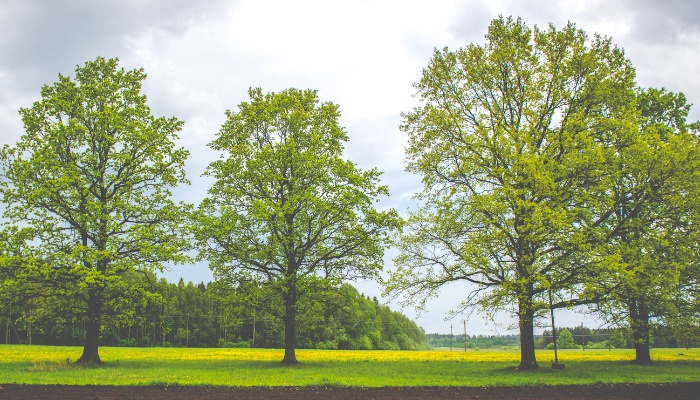
Oaks come in different varieties. Most oaks are deciduous although some are evergreen. The leaves of oaks are highly nutritious even when they’re dry.
Acorns also offer deer another valuable food source especially when they have low levels of tannin.
Many acorns ripen in the fall between October and November where food is scarce for the deer, but deer can feed on the shoots and leaves of the oak from the spring until the fall.
2. Dunstan Chestnut
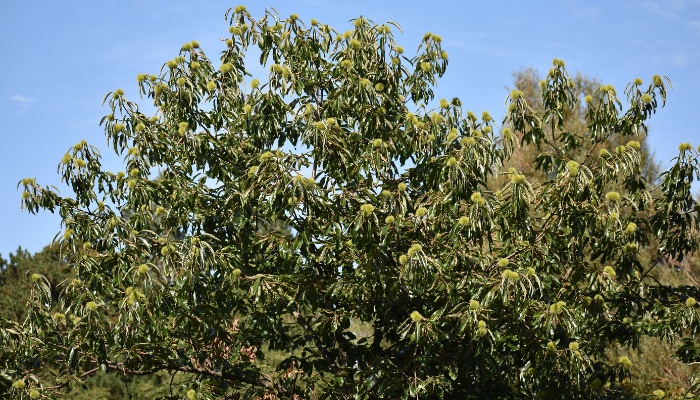
If oaks offer deer acorns, they don’t compare to the large chestnuts that these trees produce. Not only are they larger than acorns, but they come in ample crops.
The chestnuts are ripe for the deer in the fall, so that’s when you’ll find deer gathered under the trees.
3. Persimmon
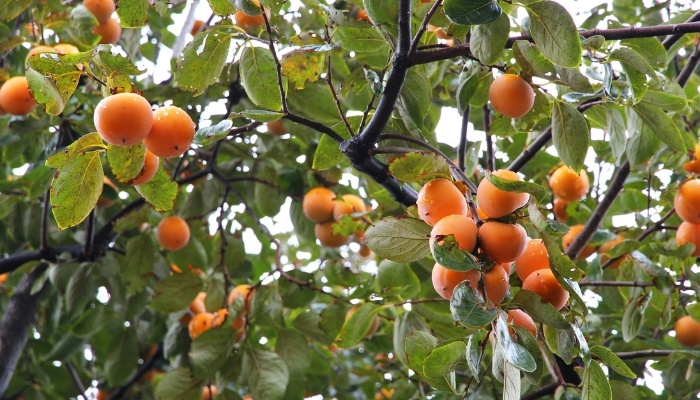
Persimmons are natural deer magnets. Their fruits are tasty and nutritious, and the trees start producing within 2 to 3 years after planting.
The ripe fruits fall to the ground, and they’re sweeter than the ones on the branches.
Deer will come looking for the ripe persimmons in the late fall and might continue visiting the tree seeking any fruits still hanging in the winter.
4. Apple and Crabapple
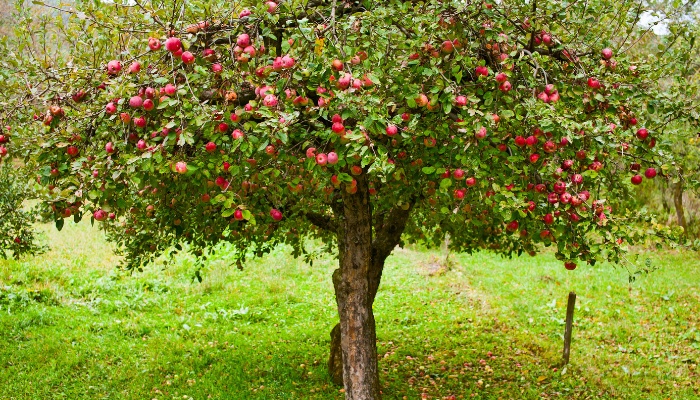
Apples have many natural species and hundreds of cultivars. Some apples ripen in the late summer while others are ripe in the fall.
Deer will gather under apple trees when the fruits are ripe in these times. The young shoots in the spring are another good food source for deer.
As for crabapples, their fruits are smaller than regular apples with a tarty taste. Most varieties ripen in the fall, and that’s when deer will seek them.
5. Pear
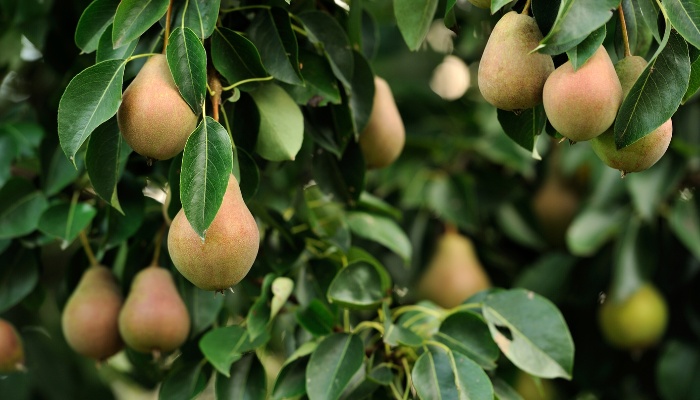
Pears, like many other fruit trees, have sweet and juicy fruits to offer the deer, but these generous trees go a step further and offer young shoots and leaves as food as well.
Pear trees are not very tall, and their lower branches are close to the ground, which puts them within reach of the hungry deer.
The animals also like to take cover under the lower branches of the pear trees. You’ll find deer around pear trees throughout the spring and summer, especially when the fruits ripen.
6. Plum
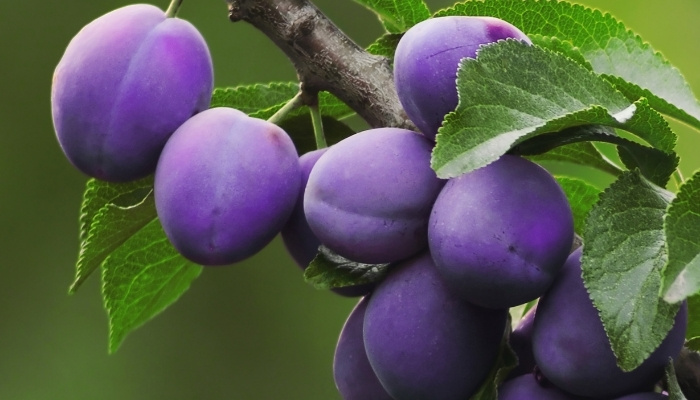
The ripe plum has more water content than other fruits on this list, and that makes it in high demand by the deer.
They usually wait for the sweet fruits to ripen and fall from the tree. This often coincides with the tree shedding its dry leaves.
Between the leaves and fruits, the deer have a wholesome meal to help them through the lean winter months. The best time to find deer near plum trees is between late summer and early fall.
7. Aspen
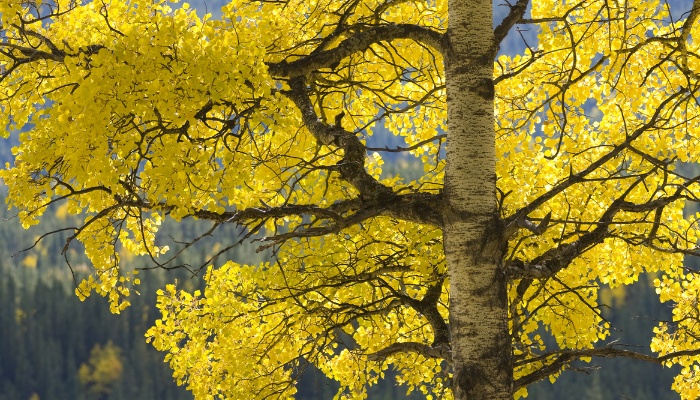
Aspens favor cool weather. That makes them one of the few trees that offer food and sustenance to deer living in cold regions.
Because the aspen is a tall and slender tree, the deer wait patiently for the nutritious leaves to drop in the fall.
In the meantime, the animals seek young aspen trees from which to strip their bark with their teeth. The young bark is both tender and full of nutrients.
8. White Cedar
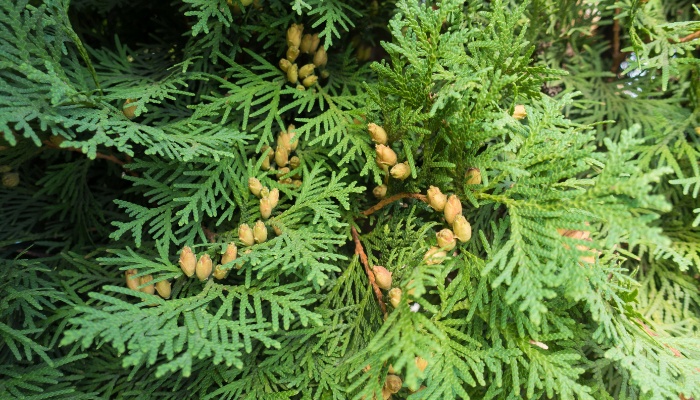
White cedars offer more than just leaves to eat and shelter from predators. They also bear cones that contain the seeds of the tree.
The cones are a half-inch long and less than that in width. Each cone has eight seeds, and when they ripen, they turn brown and drop to the ground.
Deer congregate to white cedar trees in the fall when the leaves drop and the cones are ripe.
9. Beech
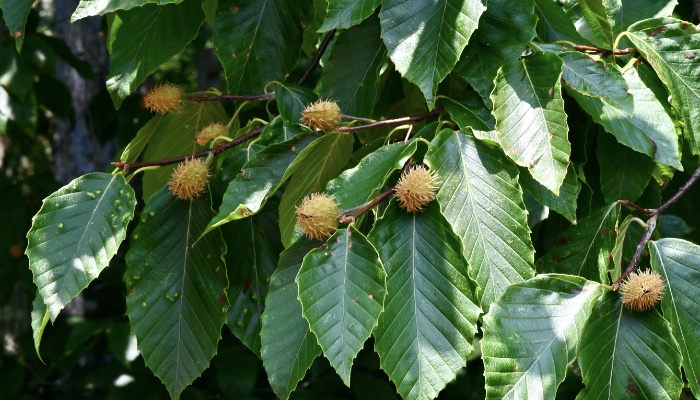
Deer prefer deciduous trees since all they have to do is wait for the tree to shed its leaves in the fall, and they have a feast for days or weeks. The beech is such a tree.
In addition to leaves, beech trees also produce nuts about 1 inch long each. The nuts are surrounded by spiky husks, and although they have high tannin levels, they’re still not as bitter as acorns.
Fall is the time when deer come to feed on the ripe nuts and dry leaves.
10. Mulberry
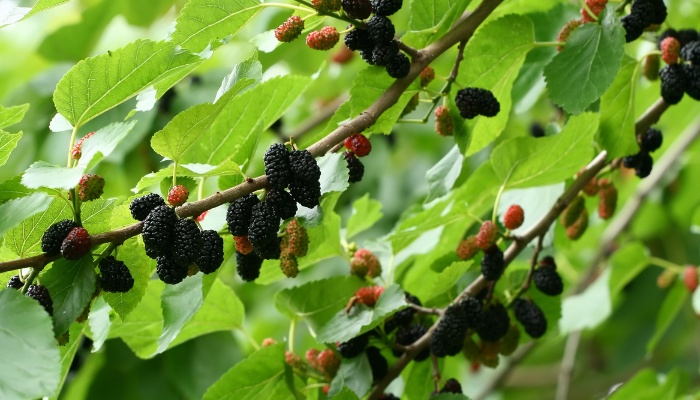
The mulberry is another deciduous tall tree, which means that the deer will visit it in the late fall when the ground is covered with dry leaves.
Fall is also the time when the fruits have turned black or dark purple as a sign that they’re ripe. The deer will feast on the fallen mulberries.
11. Maple
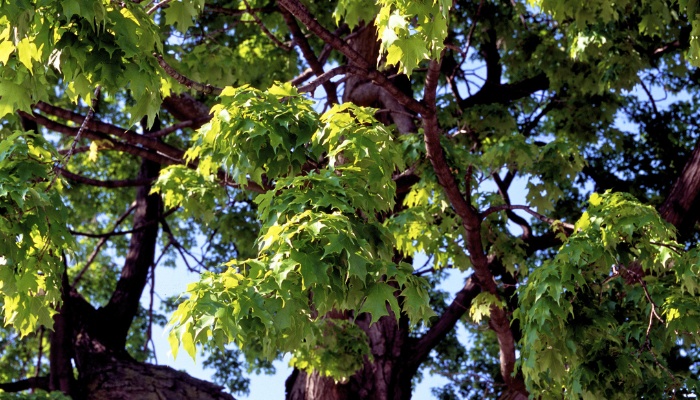
Maples come in different variations. Some are tall trees while others are shrubs, but even the tall trees keep their lower branches close to the ground where deer can reach the leaves.
Additionally, most maples are deciduous, so fall is the time when deer gather around maple trees to feed on the dry leaves.
Best Shrubs for Deer
Since deer have a small stature, they prefer shrubs with low-hanging branches over trees that put their leaves out of the deer’s reach.
Here are 8 shrubs that deer prefer to hang around at different times of the year.
1. Highbush Cranberry
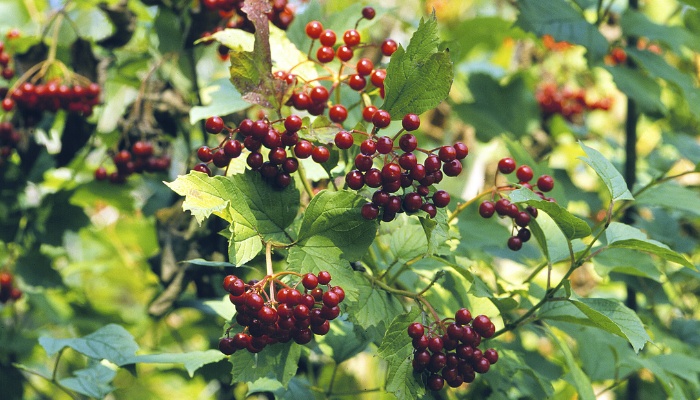
This bush is native to North America and reaches about 13 feet tall. That makes it very accessible to the deer.
Between the lobed leaves that the deer start feeding on in early spring and the ripe fruits about half an inch each, this brush has a lot to offer the foraging animals.
2. Gray Dogwood
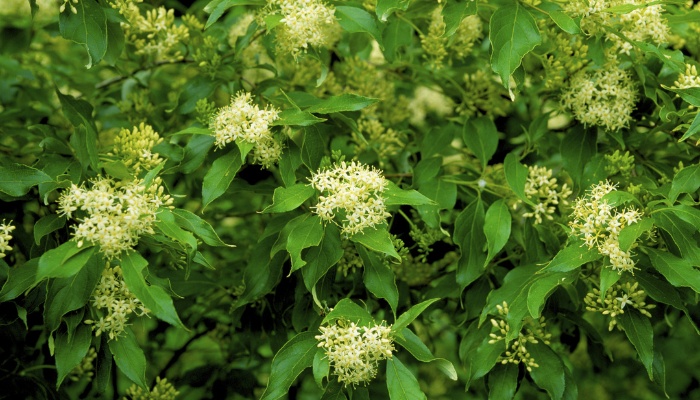
The gray dogwood is a brush that doesn’t grow above 10 feet tall at maturity. It has a lot to offer the deer in addition to its leaves.
Its tender twigs grow fast and are replaced quickly, which keeps the deer coming back for snacks. The fruits turn white when ripe between August and October every year.
3. Blueberry
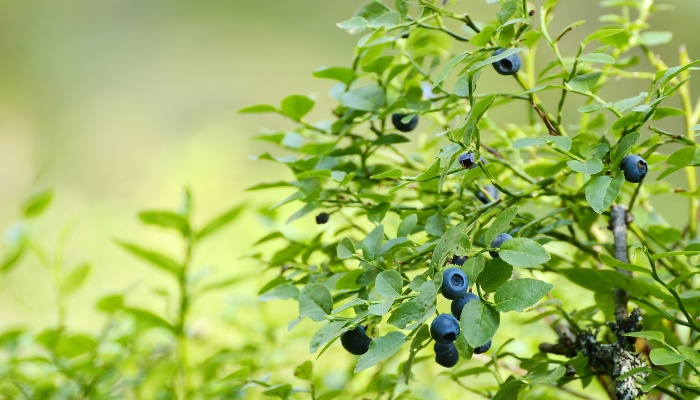
Blueberries are some of the most accessible shrubs to deer. They vary in size from 10 inches high to 13 feet tall. Deer prefer the berries when they’re ripe, even the ones with a tarty taste.
Blueberries ripen during the summer, and the deer won’t miss that opportunity. They keep visiting the bushes looking for ripe berries between May and August.
4. Blackberry
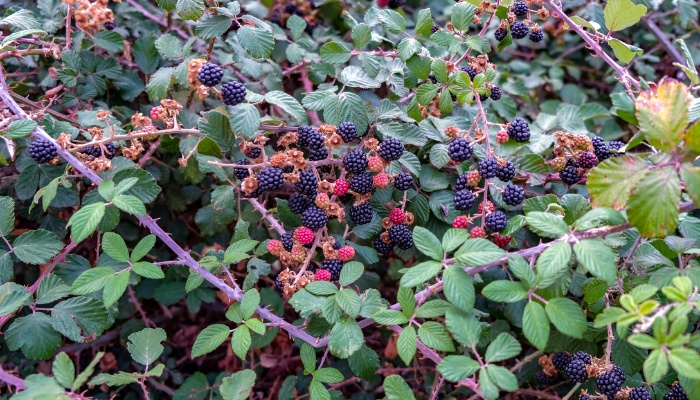
Blackberry brambles vary between 10 and 20 feet in height. Deer relish the young leaves, and they wait for the berries to ripen in the summer.
5. Bush Cherry
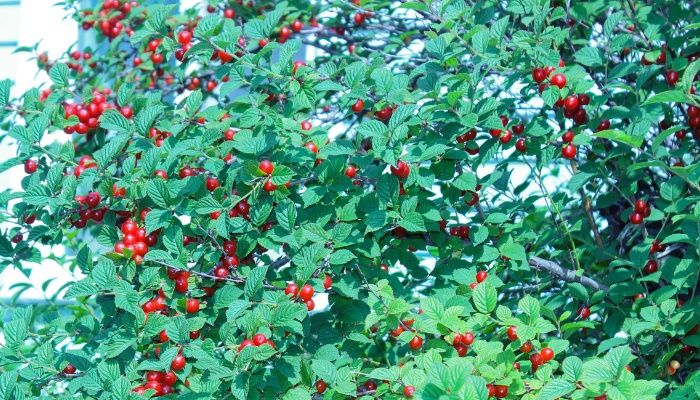
Bush cherries are hardy shrubs with high tolerance to cold conditions in Zone 2 and above. They average 15 to 18 feet tall although some cultivars only grow to 8 feet tall.
The cherries are red or dark red when ripe, and their taste ranges from overly sweet to tart.
6. Raspberries
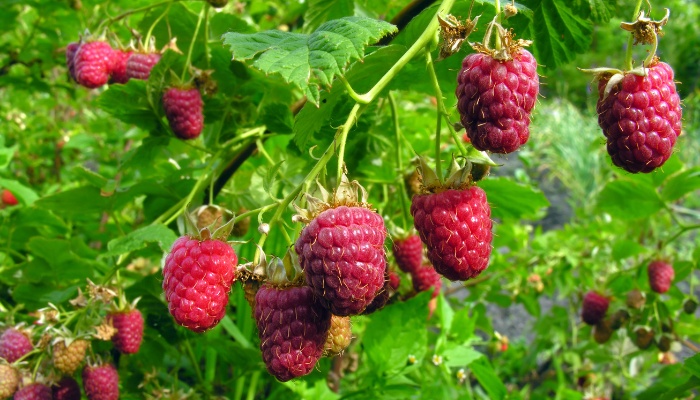
These shrubs are favored by deer for their fruits more than their leaves. A single raspberry is made up of tiny berries morphed together. Deer eat the berries and spread the seeds.
That said, the raspberry bush has a small yield, and once the ripe berries are consumed, deer will generally leave the shrub alone.
7. American Beautyberry
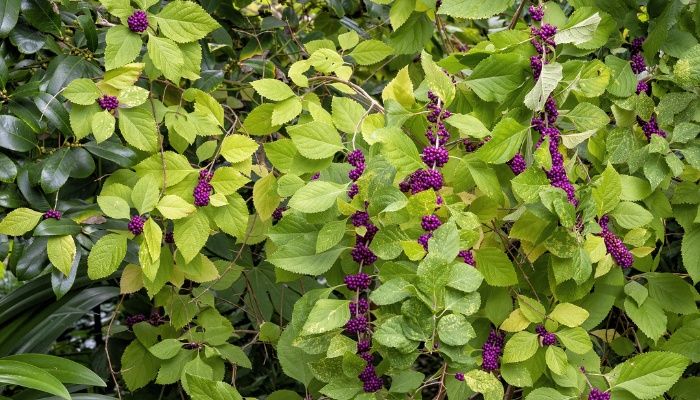
Between its bright green leaves and purple berries, the American beautyberry has a lot to offer the deer. Its dense foliage is a good cover, and the berries themselves are sweet and nutritious.
The berries ripen between September and October every year; however, you might find deer taking shelter under the shrub any time of the year.
8. Allegheny Chinkapin
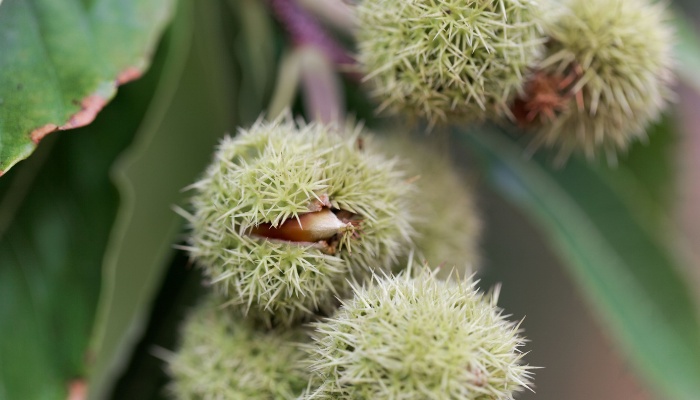
The shrub varies in size between 7 and 23 feet tall depending on the variety. Although the nuts are shielded in a shell covered with spines, deer have learned to extract the nutritious nuts.
The nut turns shiny black when ripe, and deer will come seeking the nuts in the fall.
Closing Thoughts
Deer are resourceful animals that have learned to identify which leaves, shoots, and fruits to feed on all year round.
Many trees offer more than just food to the deer as their dense canopy provides shelter to the foraging animals. Shrubs are more accessible than trees as their branches are closer to the ground.
